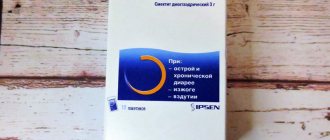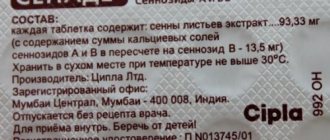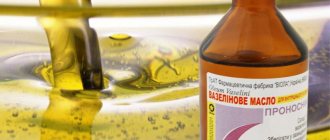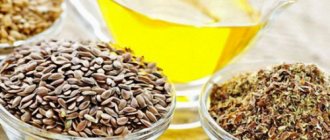Stool disorders can occur in patients of different ages and genders. Constipation affects even fully breastfed infants. And among artificial people they occur much more often. Doctors have estimated that periodic constipation affects up to 50% of adults and up to 20% of children. Difficulty or insufficient bowel movements is a serious problem that can be a symptom of various diseases. And you definitely need to fight constipation. Treatment of such stool disorders in children requires a special approach, since the use of many categories of drugs is contraindicated for them.
What is constipation and why does it occur?
Obstipation is a slowdown or complete absence of bowel movements.
This problem is a very common reason why parents turn to pediatricians. This disorder affects all age categories of children, even infants. The main reasons for the development are:
- Poor nutrition;
- Insufficient physical activity;
- Emotional and physical stress;
- Delayed use of the toilet, when the child constantly postpones defecation. This leads to improper bowel function;
- Side effects of other medications;
- Diseases of the anal area.
Prunes and dried apricots are the best laxatives
Perhaps prunes can be considered the most popular remedy against constipation. The high content of potassium and fiber has a positive effect not only on the intestines, but also on the kidneys. It also contains a considerable amount of vitamins. Pregnant women often experience constipation, and prunes are an excellent option in their case. It is sweet and pleasant to the taste, which is why children love it very much.
To achieve maximum effect on the intestines, first soak a small handful of prunes in warm water and eat before bed. In the morning you will realize that the problem is solved.
Dried apricots also help well. You can pour a glass of boiling water over a few pieces of it and prunes, and then let it brew. This delicious decoction will certainly please both adults and children. If the problem is serious, then you need to eat a handful of dried fruits for three days - then the problem will probably stop bothering you.
- What does increased intestinal pneumatization mean?
- Adhesive bowel disease symptoms after surgery
- Increased intestinal pneumatization: what it is, causes, symptoms, diagnosis and treatment
- How to recover after colonoscopy
Laxatives for children aged 12 years and older
Laxatives for children should be prescribed only by specialists after conducting a full examination of the patient’s condition and establishing the main cause of constipation:
- Children under 5 years old can take Forlax, which accumulates fluid in the stomach, which dilutes stool and removes it from the body naturally.
- The drug Senade is approved after 7 years, because allergic reactions are possible. Contains Senna herb extract, which has a laxative effect.
- Up to 8 years of age, it is recommended to choose products with components that are not absorbed in the body, but are completely eliminated from the body naturally. For example, medications containing lactulose are safe for children.
- Children over 10 years old can take an adult dose of almost any laxative, but after consulting a doctor.
Poor nutrition, stress, and much more can cause constipation in children 2–3 years of age and older. They, like babies, need help, and it can be provided with the drugs mentioned above. In addition to them, you can use other methods to solve the problem, because older children, in most cases, are sympathetic to their use. Therefore, parents should make sure that their home medicine cabinet contains the following items:
- Vaseline oil. 1-2 tablespoons of oil, drunk before meals, will help speed up the process of bowel movements without being absorbed by the body. But it is not recommended to use it often, as side effects may occur, including weakened intestinal motility, as well as a lack of vitamins (A, E).
- Xylitol and Sorbitol are polyhydric alcohols. Once in the body, they begin to act by retaining water in the intestinal lumen, due to which it is possible to remove all the contents. In order to help the baby, you need to give him a solution prepared from 100 milliliters of water and one sachet of the substance.
- Guttalax is a synthetic drug containing triarylmethane.
Its action applies exclusively to the rectum. The process of defecation occurs due to the fact that its peristalsis increases. Available in drops. The recommended dosage is no more than 5 drops, which should be mixed in a teaspoon with any liquid. Like any other drug, Guttalax has side effects, which include diarrhea, loss of potassium and sodium by the body.
Senade is a drug based on senna. Stimulates the mechanical work of the corresponding organ. Created in tablet form. Effective within 10-12 hours.
Dosage: 1-2 pills orally at night until stool normalizes.
Possible side effects: abdominal pain.
Regulax is also a product of senna. It has a similar mechanism of action to the previous one, but the release form is fruit-based cubes.
Dosage method: 0.5-1 cube per day.
Castor oil is a well-known drug. It has a stimulating effect on the intestinal muscles and increases the volume of feces. An excellent, fast-acting children's laxative.
Dosage: 1 tablespoon orally on an empty stomach.
As you can see, there are a lot of medications for the treatment of constipation, but you need to choose with caution and the advice of a doctor. The health of your own baby is the most important thing in the life of any parent. Constipation is not the worst ailment, but it cannot be ignored.
Norm and pathology
With constipation, the baby often complains of abdominal pain, cannot empty his bowels on his own, becomes capricious, cries more often, and shows signs of intoxication of the body - weakness, lethargy, headaches.
Everyone goes to the toilet differently - some children more often, others less often, and in order to judge constipation as an ailment, you need to know the average norms for stool frequency at different ages. And they are like this:
- Newborns . Babies from 0 to 4 months can go to the toilet “big” up to 8 times a day. Moreover, it will be considered normal if a child poops once, and if he does it 8 times. Fecal masses are not formed, quite liquid
- Children under 2 years old. At this age, it is considered normal if a child has bowel movements 1 to 3 times a day. The feces are formed, already have a denser consistency, and a specific smell appears.
- Children aged 2 to 4 years. These babies should ideally poop 1-2 times a day. The feces are completely formed, the process of establishing bowel function is almost complete.
- Children from 4 to 6 years old. At this age, boys and girls can go to the toilet “in a big way” either 1–2 times a day or once every two days. Both will be considered variants of the norm.
Thus, we can talk about constipation if the frequency of stool in a child differs from the norm by at least a day or two.
Doctor E.O talks about the causes of constipation in children and methods for eliminating them in the video. Komarovsky:
Constipation in children can occur for various reasons. The most harmless of them is the baby’s feeding habits. Unfortunately, difficulties with defecation sometimes indicate more serious disorders - abnormalities in the structure of the intestine, dysbiosis, metabolic disorders, acute inflammatory processes, problems requiring surgical intervention by experienced surgeons.
It is for this reason that if constipation occurs repeatedly, you should definitely show your child to a doctor.
Remember that “alarm bells” are frequently recurring constipation, pain during defecation, a sharp unpleasant smell of feces, the presence of foreign impurities in them - pus, blood, pieces of unprocessed food, the appearance of nausea and vomiting.
How to help your child?
When faced with the problem of constipation for the first time, parents should consult a doctor who will tell you which laxatives for children can give good results. They may also be given recommendations on how to solve the problem without medication.
For example, in some cases it is enough to adjust the baby’s eating and drinking regime. Massage and heat applied to the baby's belly can also give good results.
If these recommendations do not lead to positive changes, then you should resort to medications from the following groups:
- Volumetric. Their feature is the binding of fluid that is located in the intestinal lumen, due to which its volume increases. This leads to the process of defecation.
- Annoying. Due to a special chemical composition, irritation of the receptors in the wall of the digestive organ occurs.
- Osmotic. The process of defecation occurs due to the fact that salts are no longer absorbed by the body, and feces increase in volume.
Children's remedies for constipation come in different forms. Therefore, the problem that has arisen can be solved at any age. For example, the most relevant forms of laxatives are:
- Candles.
- Syrups.
- Drops.
- Microclysters.
- Pills.
The selected product must be effective and safe. In the first case, only a consultation with a doctor will allow you to decide which drug will give the best result. As for safety, when purchasing, you should study the instructions for use, all kinds of side effects and contraindications.
When choosing a laxative for a child, you should pay attention to the fact that it:
- It had a gentle effect on the body.
- Its active substances were aimed only at solving the problem, and not at the entire body.
- It did not affect the body's absorption of salt.
- It was manufactured by a trusted manufacturer who has earned a positive reputation.
- Appropriate for the child's age.
Constipation is a syndrome that can be treated at home. The main thing is to diagnose it in time and prevent the development of complications.
It is not always justified to use laxatives for constipation right away. Sometimes it is enough to massage the baby’s tummy or simply normalize the food intake, this is especially true for children from birth to 3 years. But you also need to know what medications to give your child.
Magnesium salts
This remedy is rarely used in pediatric practice to treat constipation. Doctors prefer safer medications. Magnesium sulfate is an osmotic laxative medication; taking it helps:
- increase osmotic pressure in the intestine;
- increase the accumulation of water in the intestines (thin the stool);
- enhance peristalsis.
Magnesium sulfate is used occasionally and is not suitable for long-term treatment. The drug is sold in powder form. For children 6-12 years old, it should be given five to ten grams, dissolved in 100 ml of warm water. The product should be drunk shortly before a night's rest or in the morning on an empty stomach (half an hour before breakfast). Over the age of 12, the dosage is 10 g.
Magnesium sulfate is not the safest laxative for constipation. The drug is not prescribed for:
- increased sensitivity;
- inflammation of the appendix;
- suspected bleeding in the gastrointestinal tract;
- suspected intestinal obstruction;
- acute inflammatory diseases of the digestive tract;
- colitis;
- cholelithiasis and blockage of the bile ducts;
- dehydration;
- hypermagnesemia;
- lack of calcium and depression of the respiratory center;
- feverish conditions;
- low blood pressure;
- severe renal failure.
Magnesium salts are not used if the child is under 6 years old.
Magnesium sulfate, when taken internally, can cause various undesirable side effects, ranging from nausea and diarrhea to serious electrolyte imbalances (bradycardia, headache, drop in blood pressure). If such symptoms appear, you should seek medical help.
Enemas for children
In an emergency, you can do an enema, which allows you to eliminate hardened waste products in the colon in a few minutes. At the same time, experts do not recommend abusing this method, because during the procedure, beneficial bacteria, which are responsible for the process of digesting food, are washed out of the body.
To prepare an enema, you can use ordinary water, the temperature of which should correspond to body temperature. For better effect, you can use various oils, for example, castor or vaseline, which have a positive effect on the process of restoring natural bowel movements. You can also use medicinal herbs that have bactericidal and antiseptic properties. Before doing an enema, you should definitely consult your doctor.
At the pharmacy you can buy a ready-made enema for adults and children. For example, Microlax. This is a microenema, which is allowed from the first days of a baby’s life, but only after consulting a pediatrician.
How laxatives work
For constipation in children, laxatives of one of two types are prescribed - synthetic and herbal remedies. They are purchased at a pharmacy without a doctor’s prescription, but use must be controlled, as they are not safe.
Based on their effect on the gastrointestinal tract, medications are divided into groups:
- Irritate the mucous membrane of the tract. The medicine begins to work within two hours. The excretion of feces accumulated in the intestine is stimulated.
- Retains fluid in the intestine. Water is drawn into the organ and softens the accumulation of feces, then defecation occurs.
- Serves as a filler. While in the digestive system, they increase in size, widen the passage, which fills with water, and feces are easier to pass through the anus.
- Act in the small intestine. Contains oil. Create conditions for stool to slide inside the intestine. Defecation occurs after five hours.
Folk remedies for constipation up to one and a half years
Food laxative products.
- Dried fruits. Prunes and figs have a strong laxative effect, but do not have a negative effect on the life of the baby. You can cook compotes and make infusions from dried fruits. Dried fruits softened in boiling water are added to the baby’s menu. As complementary foods, plums and prunes are introduced into the baby’s diet from 5 months. A nursing mother can add these fruits to her menu to help her child cope with constipation.
- Freshly squeezed carrot juice is used as a treatment and to prevent constipation. Give your baby 30 ml of juice in the morning and evening.
- Pumpkin porridge is a laxative that helps improve bowel function.
- Oatmeal or food with oatmeal. You can give a child from 3 months 1 teaspoon.
- Prune puree is added to porridge or as a separate type of complementary food.
- Vegetable oil with honey. Mix equal amounts of ingredients until smooth. Give 2 teaspoons in the morning on an empty stomach.
- Vegetable oil, 5 ml, is added to the porridge that mother cooks. It is also a prophylactic agent.
- Fermented milk products: kefir, yogurt. Introduced into the baby's diet from 8 months. At an early stage, a mother who is breastfeeding can gradually add these foods to her diet.
The mother should first try laxative products allowed when breastfeeding in small portions. If an allergic reaction occurs, stop using them.
Among the folk remedies recommended for the treatment and prevention of constipation, there is a large selection of medicinal herbs and infusions.
- Pharmacies sell ready-made medicinal herbal teas for children. Children's tea often includes chamomile and fennel.
- Rhubarb. The decoction restores the functioning of the intestines. The thoroughly washed plant is poured with boiling water and infused for 5 - 6 hours.
- Infusion of peach leaves. Solves the problem of difficult bowel movements and at the same time gets rid of helminths without resorting to drug treatment.
- Dill water. For a glass of water 1 tsp. dill seeds Place the seeds in boiling water, cook for 2 minutes, cool and strain.
- Dandelion decoctions are also used.
Very often, doctors advise combining herbal infusions with the use of laxatives in order to achieve a more reliable effect in the treatment of constipation.
Author of the article
Karina Osipova
Beets are a popular product for relieving constipation.
The following will help you relax and empty your bowels at home:
- Beets are a good way to relieve constipation. The root vegetable is boiled and grated. Use 1 time per day. Children are given 10 ml of beet juice 2 times a day.
- Prunes. Berries (fresh or dried) are washed and given to the child 3-4 pieces. Bowel movement occurs after 6 hours. Prunes are allowed for children from 3 years of age. For complementary feeding, puree intended for baby food is used.
- Dried apricots are a home remedy for intestinal relaxation. The berries are poured with water, simmered for 40 minutes, and the syrup is drained. Drink 20-30 ml of the drink 3 times a day.
- Dill water. The product is suitable for infants. Brew 2 tsp in 200 ml of boiling water. seeds Filter after 15 minutes. Give the baby 5 ml 3 times a day. For a child over one year old – 50 ml 3 times a day.
- Dried fruits compote. The product is used to treat children from 3 years of age.
- Apples. Children who have learned to chew are given fresh fruits. For babies, they prepare purees or buy baby food in jars.
- Oat milk. In the evening, pour 200 ml of boiling water into a thermos, pour in 100 g of grains. In the morning the extract is filtered. The dose for newborns 6-12 months is 5 ml, for children 1-4 years old – 15 ml, from 5 years to 7 years old – 70 ml, from 8 years old – 100 ml.
- Raisin compote. The drink is relevant for the treatment of infants. Compote can be used from 6 months.
- Flax seeds. Pour boiling water over the grains and wait until they swell. Dose for children 1-3 years old – 1/3 tsp, from 3 years old – 1 tsp. per day. The seeds can be added to food.
There are no daily laxatives. The course of treatment lasts 15-30 days. With uncontrolled use of constipation medications, lazy bowel syndrome develops. The disease takes a chronic form, which is difficult to get rid of.
Medicines
Synthetic drugs
Such medicines consist of chemical ingredients. Aimed at absorbing fluid from the body and accumulating in the gastrointestinal tract. However, such drugs have serious side effects: colic, effects on the liver, kidneys, allergic reactions.
Synthetic drugs are sold in pharmacies without a doctor’s prescription:
- Bisacodyl is a drug that acts in the small intestine. Available in the form of tablets, dragees and suppositories. Suitable for use by children over 2 years of age. Long-term use of the medication is not advisable.
- Guttalax - the action of the medicine is aimed at irritating the mucous membrane, the resulting lumen is filled with liquid, and feces freely exit through the anus. Do not use for children under 4 years of age. The produced form is drops. Taking the medicine in the evening will give a positive result in the morning.
Children's laxative for children from 3 to 7 years old
Glycerol. Available in the form of suppositories, which contain glycerin. This is a very mild laxative that can be used from birth. It has an irritating effect on the intestinal wall and makes stool more liquid. It is considered by doctors as an effective fast-acting children's laxative. Not recommended for permanent use.
Dosage method: 1 suppository per rectally until the desired effect is achieved.
Possible side effects: with prolonged use - irritation of the rectal mucosa.
Microlax. Microclysters with a complex mechanism of action, due to the presence of sorbitol and sodium citrate in their composition. They dilute excrement and increase the flow of fluid into the intestinal lumen.
Dosage method: 1/2 microenema up to 3 years, 1 microenema for older children.
Possible side effects from the use of this laxative: itching in the anal area.
Duphalac. This is probably the most popular remedy for constipation for newborns. The composition includes lactulose, which is a natural dietary fiber. Available in the form of syrup for oral administration. According to WHO recommendations, this is the best laxative for children under one year of age. The drug binds water inside the intestines and increases the volume of bowel movements. It is worth noting some features of this medicine:
- Not absorbed into the wall of the organ;
- Not addictive;
- Is a prebiotic. Has a stimulating effect on the growth of beneficial intestinal microflora;
- It is a symptomatic remedy and does not eliminate the root cause of constipation, but only helps to clear the intestines of contents;
- Approved for long-term use in chronic forms of the disease.
Dosage method: 1 ml per day. If there is no result, you need to increase the dose by 0.5 ml every 2-3 days until regular bowel movements occur. The maximum daily dose for children under 4 years of age is 5 ml.
Possible side effects: increased gas formation.
Forlax. Almost identical to the previous drug. The main difference is the composition. Forlax is a synthetic laxative product consisting of polyethylene glycol. The mechanism of action and features are absolutely similar to Duphalac, but it does not affect the microflora.
Allowed for children from 6 months.
Dosage: 1 sachet (4 grams) 1 time per day.
Possible side effects: very rarely - abdominal pain.
The only absolute contraindications for the use of the above-mentioned drugs are anomalies of intestinal development and surgical pathology.
Older children have a wider arsenal of medications - in addition to the medications mentioned above, you need to add:
- Ordinary Vaseline oil. A very simple and reliable drug, it is not absorbed into the body and facilitates the passage of feces. Dosage: 1-2 tablespoons orally on an empty stomach. Possible side effects: with prolonged use, vitamin deficiency develops. A, E and there is a weakening of intestinal motility;
- Sorbitol and xylitol are polyhydric alcohols that promote the return and retention of water in the intestinal lumen, thereby accelerating the process of eliminating its contents. Dosage method: dilute the contents of the package in 100 ml of water for oral administration;
- Guttalax is a synthetic drug that consists of triarylmethane. It acts only in the large intestine, enhancing its peristalsis. Dosage method: 2-5 drops per teaspoon of tea or milk for oral administration. Possible side effects: very rarely leads to the development of diarrhea or loss of electrolytes (potassium and chlorine).
Microlax
Unlike lactulose, Microlax is a fast-acting product. It should be used as an emergency drug; this medicine is not suitable for systemic use. Microlax has a combined effect due to its complex composition:
- sodium citrate quickly displaces bound water present in the intestinal contents;
- sodium lauryl sulfoacetate helps to liquefy the intestinal contents;
- sorbitol stimulates the active flow of fluid into the intestines, which leads to softening of stool and helps facilitate the process of defecation.
The laxative is available in small microclyster tubes for one-time use. Each tube contains 5 ml of solution. Microlax is intended for rectal administration; the application process consists of several stages:
- break off the seal located at the tip of the tube;
- squeeze out a little of the product so that a drop of it lubricates the tip of the enema (this manipulation will facilitate the administration process);
- insert the tip completely (if the child is over 3) or halfway (for children 3 years old or younger) into the rectum;
- squeeze out the entire contents of the microenema by squeezing it;
- remove the tip without opening the tube.
Microlax acts within 10 minutes, causing the urge to defecate. The laxative should not be used if you are hypersensitive to its components. The administration of the medicine almost always causes discomfort and even burning of the mucous membranes of the rectum, but such sensations pass quickly.
Types of drugs
Oral drugs that regulate stool are available in the form of:
- syrups;
- suspensions;
- powders
A prerequisite for early age is a pleasant taste. Principle of action of the funds:
- effects on the intestinal mucosa – irritating drugs;
- concentration of fluid in the intestines, softening of stool;
- probiotics that restore intestinal microflora.
You can determine which products are most suitable by using one at a time.
Annoying
Irritating drugs are more aggressive:
- They work in 6–8 hours.
- They can cause discomfort because the intestines strive to remove the substance by contracting strongly and pushing out the contents.
- Laxatives cause fluid to accumulate, causing fluid imbalance.
- Repeated use of these drugs by young children leads to intestinal atony, which stops working on its own.
For babies over one year old, start with small doses, observing the child’s reaction.
Osmotic
Osmotic preparations contain salts that attract water from subcutaneous fatty tissue and the lymphatic system. Disadvantage of drugs:
- can cause dehydration and abdominal pain;
- the body loses electrolytes, which can result in hematopoiesis problems and heart failure.
They work for a long time – up to 4 days.
The most useful among all types of laxatives for the treatment of constipation. The substances enter the intestines, where they increase the amount of necessary microflora. The products are sold in pharmacies. Additionally, homemade products are used. Operating principle:
- cause mild contractions of the intestinal walls;
- enhance peristalsis.
Disadvantage - they do not give immediate effect, they are more effective for chronic constipation.
Choosing the right constipation medication for young children is not easy. Each of the drugs has its own contraindications and features of use. The main selection criterion is the age range:
- For children from birth to three years, a laxative in the form of drops, rectal suppositories or syrup is suitable;
- For older children, it is recommended to give the medicine in powder or in the form of chewable lozenges;
- Teenagers can take laxative tablets.
Microclysters can be given to children of any age; suppositories are introduced into practice from 3 months.
Special requirements apply to constipation medications for newborns. It should be simple and easy to use, give quick and soft results, have no dyes or taste improvers in its composition, and not be addictive.
Let's see what laxatives are recommended for children.
These drugs are effective, act quickly, but harshly. They irritate intestinal peristalsis, causing the walls to contract and push feces out. They are rarely prescribed to children and only after 4 years.
Main representatives of the group:
- Slabicap;
- Guttalax;
- herbal laxatives (senna, buckthorn, rhubarb);
- fruit lozenges Regulax, Kafiol;
- castor oil, glycerin.
The result after taking irritants occurs within 6–10 hours.
The advantages of the drugs include fast action and low price, the disadvantages are the depletion of receptors, after which laxatives become ineffective.
Let's look at the most popular irritating medications:
- Guttalax. Fast-acting agent in tablets and solution. Used for immediate defecation. Children from 4 years of age are prescribed a dosage of 5–10 drops once a day, before bedtime. Defecation occurs after 8 hours. The cost of the drug in capsules, current as of January 2020, is 215 rubles, in drops – 350 rubles.
- Senade. Laxative of plant origin. Children 7–12 years old are prescribed ½ tablet once a day. For adolescents over 12 years of age, the dosage is doubled. A package of Senade No. 20 costs 22 rubles.
- Slabicap. Used for children 4 years and older. The initial dose is 5–8 drops, then, if well tolerated, the amount of medication can be increased. It is recommended to take it at night, 1 time per day. A 10 ml bottle of Slabicap costs 70–100 rubles.
Laxatives with irritating effects should not be given to children for more than 7 days, otherwise intestinal tone decreases and constipation only gets worse.
The safest and most reliable children's laxative. Osmotics, entering the digestive tract, slow down the absorption of liquid by the intestinal walls, which helps to increase the volume of feces and soften them. They act more slowly than irritating laxatives - the effect occurs after 12-36 hours.
The advantage of laxatives in this group is the safety of use - they do not cause addiction and “lazy bowel” syndrome, have few contraindications and can be used for children from birth. In addition, osmotic agents not only eliminate, but treat constipation.
Disadvantages include slow action and the likelihood of dehydration with prolonged use.
Duphalac syrup is recognized as one of the best laxatives for children. The drug is the only approved remedy for constipation in newborns and can be prescribed from the first days of life at a dosage of 1–3 ml/kg per day. If the initial portion of the laxative is insufficient, it can be doubled. For chronic constipation, the instructions for use allow the use of Duphalac for a long time - at least 2.5–3 months. A 200 ml bottle of syrup costs 225 rubles.
Forlax also has a good osmotic effect. Prescribed to children from six months of age, ½ sachet per day. After a year, the dosage increases to 1–2 sachets per day. It is better to give a laxative in the morning, dissolving the powder in a small amount of water. A package of 20 sachets costs an average of 250 rubles.
Goodluck syrup with a caramel scent is considered a mild and safe laxative for children. Used to treat constipation from 6 months. The initial daily dose is 5 ml, with age the amount of the drug increases to 10–16 ml. The syrup has virtually no side effects. The price of a 200 ml bottle is 250–260 rubles.
Laxatives in pediatrics
Abnormal bowel movements in children require mandatory medical attention. Correction of such conditions is complex, including the mandatory elimination of the cause of their occurrence. Patients require mandatory diet correction and diagnostics to detect possible functional disorders. The use of laxatives is indicated for:
- pain during bowel movements, in such a situation the child will be afraid to go to the toilet and the problem of constipation will only worsen;
- the appearance of cracks due to hard feces;
- prescribed by the attending physician.
If stool occurs rarely in children (once every 2-4 days) and is dense, but the process of defecation does not cause pain, cracks (blood) and is not accompanied by stool smearing, you can cope with the problem with the help of a diet and regimen and physical activity. A laxative medicine must be prescribed by a doctor.
The following laxatives are used in pediatric practice:
| Name | Age of application (ascending) |
| Lactulose (Duphalac) | From an early age (from birth) |
| Microlax | From an early age |
| Hydrophilic laxatives (Macrogol) | From 6 months |
| Glycerol (glycerin suppositories) | Laxative for children 3 years old (as prescribed by a doctor - from birth) |
| Sodium picosulfate | From 4 years old |
| Bisacodyl | Tablets - from 6 years, suppositories - from 10 years |
| Saline laxatives (magnesium salts) | From 6 years old |
| Mukofalk | From 12 years old |
| Senna | From 12 years old |
Contraindications
Laxatives for newborns have a large list of contraindications, which is associated with possible diseases of the internal organs. That is why they should be prescribed only by specialists after a thorough examination of the child.
Contraindications include:
- Intestinal obstruction.
- Allergic reaction to the components of a laxative medication.
- Cystitis.
- Unidentified abdominal pain.
- Acute inflammatory diseases of the abdominal cavity: ulcerative colitis, appendicitis.
- Lactase deficiency.
- In case of renal or liver failure, laxative drugs are prescribed with extreme caution. In these cases, it is not recommended to self-medicate.
- Abdominal surgery.
In any of these cases, consultation with a specialist is necessary.
Each constipation medicine for children has its own limitations for use. But taking any laxatives is prohibited in the following cases:
- intestinal obstruction;
- attack of appendicitis;
- strangulated hernia;
- dehydration of the body;
- colitis of any nature;
- aganglionosis;
- spastic constipation.
It is dangerous to give a laxative if there is a foreign object in the intestines, the presence of congenital structural anomalies, or inflammation of the gastrointestinal tract.
Glycerin suppositories
This is another fast and effective drug that is suitable for occasional use. Like Microlax, glycerin suppositories should be used as an emergency treatment. The main component of the drug is glycerol, which, when administered rectally, easily irritates the intestinal lining, which stimulates peristalsis (contraction of the intestinal muscles to excrete feces), softens the intestinal walls, facilitating the sliding of feces.
Glycerin suppositories act within 15-20 minutes; in rare cases, the drug may not cause bowel movements immediately. The result largely depends on the duration of constipation and the physical condition of the intestines.
Using glycerin suppositories is simple:
- the drug should be used 1 r. at 24 hours;
- It is best to administer the product 15-20 minutes after breakfast;
- the suppository must be inserted into the child’s rectum and left for 7 minutes (so that the suppository dissolves).
Children over the age of 5 can be given suppositories containing 2.11 g of glycerol, and children younger - with 1.24 g of glycerol.
Sometimes doctors prescribe glycerin suppositories even for newborn children. However, the dosage should be smaller - the candle is divided in half. The possibility of using glycerin suppositories at an early age is discussed with your doctor.
Among the contraindications to the use of the drug:
- hypersensitivity to the components of the drug;
- renal failure;
- IBS (irritable bowel syndrome);
- suspicion of intestinal obstruction;
- inflammation of the appendix;
- bleeding;
- loose, frequent stools;
- hemorrhoids or anal fissures;
- inflammatory bowel diseases;
- tumors in the rectum;
- abdominal pain of unknown cause.
Glycerin suppositories are well tolerated by patients. Rare side effects in children include:
- allergic reactions;
- pain;
- nausea;
- vomit;
- bleeding in the digestive tract.
Irrational and prolonged use of glycerin suppositories leads to irritation and discomfort of the rectum. The development of catarrhal proctitis is possible.
Recommendations on nutrition and drinking regime for children suffering from constipation
If there is a predisposition to rare bowel movements, the child’s diet must include laxative products. There are different ones for every age.
If a newborn is fed with mother's milk, the nursing woman should follow the diet, giving preference to fermented milk products, vegetables, fruits and grains.
When artificial feeding, it is recommended to use the following mixtures:
- containing gum (Friso VOM, Nutrilon Antireflux);
- with probiotics (Nestle NAN fermented milk);
- with lactulose or galactooligosaccharides (Semper Bifidus, Nutrilon Comfort).
The diet of children 3–7 years old should include vegetable salads and vinaigrettes, fresh and dry fruits, grains, bran bread, and lactic acid products. Schoolchildren need to be given a sufficient amount of soups, boiled meat and fish, beets, carrots, apples, prunes and dried apricots (10–12 berries per day). It is advisable to exclude rice, mashed potatoes, semolina, jelly, baked goods from the diet, and limit sweets and carbonated water.
Children suffering from constipation should be provided with plenty of fluids. Experts also recommend giving your child some boiled water on an empty stomach.
If such a diet is insufficient, add bran from 5 to 25 g per day to the food, sprinkling it on porridge or soup. It is also important to set aside a certain time for defecation and create comfortable conditions. Starting from 12 months, children should be put on the potty immediately after eating (toilet training).
Constipation is not a disease and, if treated in a timely manner, extremely rarely leads to unpleasant complications. Therefore, if a child sits on the potty for a long time, strains and blushes, he needs help. Moreover, modern medicine has in its arsenal many laxatives for children of different ages.
What to feed your baby
We adhere to the following simple rules to restore normal functioning of the digestive system:
- First of all, you need to eat often so that your stomach is constantly working. Three main meals and several snacks will be enough for the child.
- The last meal should be at least 2 hours before bedtime.
- A constipated child's diet should include foods with plenty of fiber. It is dietary fiber that allows you to eliminate stagnation of feces in the colon.
- Morning exercises and physical activity throughout the day are mandatory. It is useful to massage the tummy to normalize the functioning of the digestive system.
- Bran will help speed up the natural processes of bowel movements. One spoon before meals is enough to cleanse the intestines of toxins. Children under one year of age can be treated with a bran decoction, which has a gentle effect on the gastric mucosa, activating its work.
- The daily menu should include fresh vegetables and fruits, cereals and fermented milk products, which help normalize the functioning of the gastrointestinal tract.
The child’s daily diet should include safe foods that do not cause allergic reactions and remove stagnant feces from the body naturally.
So, children can eat:
- Vegetable dishes based on carrots, cabbage, beets, pumpkins and zucchini. You can feed your child a salad of cucumbers and tomatoes, prepare a vegetable stew or borscht.
- Barley and buckwheat allow you to restore normal stomach function.
- Wheat or oat bran.
- Wholemeal bread.
- Fermented milk products, such as yogurt, cottage cheese or kefir.
- Fruit and vegetable juices.
- Fruits such as plums, apples, prunes.
- Jams and jams.
- Natural honey, if there is no allergy.
What should not be given to a child if he has problems with bowel movements? It is recommended to exclude the following foods from your daily diet:
- Coffee, cocoa and black tea.
- Rice and semolina.
- Kissel and jelly.
- Bakery and confectionery products.
| Laxative products | Products that strengthen |
| Kefir, yogurt, cottage cheese, fermented baked milk | Bakery products, pasta |
| Buckwheat, wheat groats, bran | Rice and semolina |
| Cabbage, carrots, beets, cucumbers, tomatoes, greens | Onions, garlic, radishes |
| Apples, plums, prunes, dried apricots | Coffee and black tea |
| Honey, sugar syrups, jam | Gelatin and jelly |
| Sunflower and olive oil | Fatty meats and fish |
The child's daily diet should include laxative foods to restore the natural processes of bowel movements. Only after consulting a doctor can any methods of treating constipation in infants be used. At 4 years old, you can expand your daily diet with foods that do not cause allergic reactions in children.
Sample menu for a child under 3 years old:
- Breakfast. Oatmeal or buckwheat porridge. Oatmeal cookies, tea with honey.
- Lunch. Apple or prune.
- Dinner. Borscht, buckwheat with steamed cutlet and salad.
- Afternoon snack. Cottage cheese with fruit.
- Dinner. Boiled fish with vegetables.
- A glass of kefir at night.
During the day you can drink water, juices, dried fruit compotes.
Menu for children over 3 years old
- Breakfast. Vegetable omelette or oatmeal with dried fruits.
- Lunch. Plums or bananas.
- Dinner. Vegetable stew with lean meat, green borscht or cabbage soup.
- Dinner. Cottage cheese or vegetable casserole.
- A glass of fermented baked milk at night.
Useful video on how to treat constipation in children
List of sources:
- Magazine "Pharmateka". No. 1 – 2011.
- Diseases of the digestive system. Childhood diseases / Kornienko E. A., Shabalov N. P., Erman L. V. 2007.
- Use of colonic manometry to differentiate causes of intractable constipation in children. Di Lorenzo C, Flores AF, Reddy SN, et al. J Pediatr. 1992.
- Directory of medicines Vidal. 2020.
- V. F. Privorotsky, N. E. Luppova. Modern approaches to the treatment of functional constipation in children // RZHGGK. – 2009.
- Laxative for children: 12 best remedies for children 0 and over 2 years old
- Remedies for dysbacteriosis for children
- Laxative for children
- Good fast laxative
Requirements
The ideal children's laxative should be non-toxic, mildly acting, preferably of plant origin.
A remedy for constipation for children should not be addictive and contribute to the development of “lazy bowel” syndrome, when, with frequent use, the child generally stops bowel movements on his own, without medication. This syndrome can significantly complicate the situation, since degenerative changes in intestinal receptors can begin.
The description of laxatives recommended for children best fits stool softeners and products based on natural oils. Lactulose-based medications are recommended for infants and children who are barely 1 year old. In addition to solving the main problem, they contribute to the formation of their own normal intestinal microflora, which will allow the child in the future to forget about such a delicate problem as constipation.
Children's forms of laxative medications are almost no different from adults - these are drops, syrups, rectal suppositories, tablets and powders. The solid form of the medication implies an older age of the child. It is advisable to give children under 4–5 years of age a laxative in the form of syrup, drops, or suppositories. The tablet form of the drug is for children 7–9 years old. Starting from 10–12 years of age, children can be given capsules.
Please note that suppositories act faster than tablets, so if you need to achieve a quick effect, it is better to give preference to topical medications. If the choice is between syrup or tablet, syrup will have a faster effect.
Laxatives should not be given to a child if his constipation is caused by acute intestinal diseases, sometimes requiring surgical intervention (appendicitis, for example). Another important detail: all laxatives only eliminate the effect, but do not treat the cause of constipation. That is why it is important to examine the baby and, if necessary, begin comprehensive treatment.
You can learn about the causes of constipation in children by watching the recording of the webinar conducted by Valery Feliksovich Privorotsky, Doctor of Medical Sciences, Head of the Department of Abdominal Pathology of the St. Petersburg State Budgetary Healthcare Institution “Consultative and Diagnostic Center for Children”:










